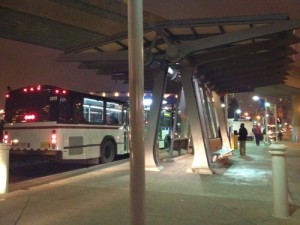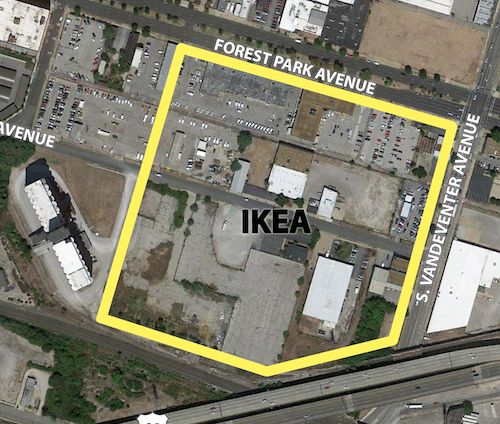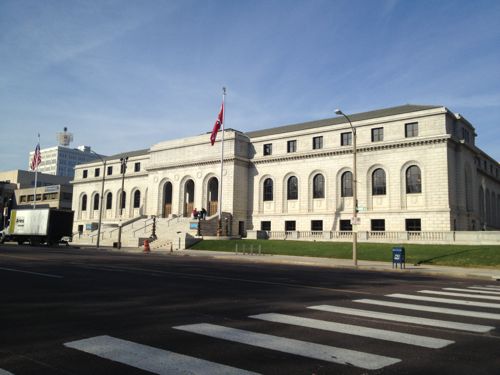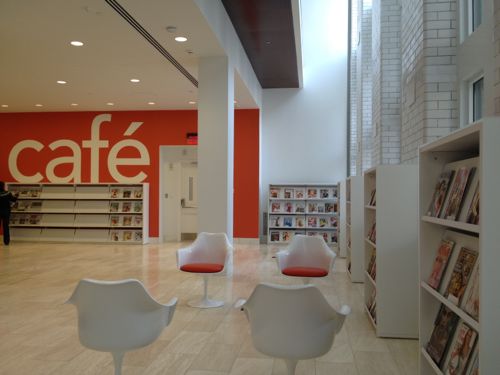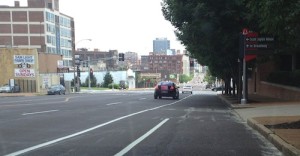Cortex District Needs A Pedestrian Circulation Plan Before IKEA Is Built
|
|
Cortex is a district created by a collaboration of numerous research institutions, self-described as:
Founded in 2002, Cortex is mid-America’s premiere hub for bioscience and technology research, development and commercialization, anchoring St. Louis’ growing ecosystem of innovative startups and established companies. Providing state-of-the-art facilities to support the nation’s most promising technological advances, Cortex offers custom lab and office space, proximity to world-class research institutions, a highly-trained tech workforce, access to venture capital…all surrounded by amenity-rich urban neighborhoods.
They describe the location like this:
Cortex is conveniently located next to I-64 and easily accessible via private or public transportation. The area is home to some of St. Louis’ most exciting attractions and neighborhoods. In addition to being neighbors with other leading science and technology companies, you are within easy reach of Forest Park, which is larger than New York’s Central Park, the St. Louis Science Center, the St. Louis Zoo, The Muny and many other cultural and entertainment centers. Midtown is also home to charming sidewalk cafes, galleries, antique shops, boutiques and pubs. The area has been described as a little European, a little New York, and totally St. Louis.
For a while now Cortex has been working to add a new transit station along the existing MetroLink light rail line. I don’t know if it has been given the green light, but it has been studied at great length. Here are some quotes from a June 2013 ULI Technical Assistance Panel Report:
By placing the station as close to Boyle as possible, riders would be welcomed to the District by the Commons, thereby creating an impressive and distinctive park-like ‘front door’ to the District. The station would be also easily visible from Boyle, making way-finding easier and promoting future ridership by virtue of its visibility to auto traffic.
While the station should be placed close to Boyle, the Panel still felt strongly that the station should be accessible to pedestrians and bicyclists via entrances at Boyle and Sarah, providing riders with two options for ingress/egress. Directional signage should also be placed on and highly visible from both streets to assist passengers with finding the station entrance. (p5)
Of immediate note was the current state of the streets and pedestrian experience in the District. There is a significant amount of overgrowth in the area, particularly along sidewalks, which leaves visitors with a sense that the area is largely ignored or abandoned. To truly operate as a District, care should be taken to maintain the sidewalks and streetscapes throughout the area, not just those in the immediate vicinity of current or complete development. (p10)
With the station nearing reality and additional businesses planning to bring innovation and employees to the District, the members of Cortex are faced with another opportunity to come together once again to solve a need. In this instance, the challenge is parking in the District. By creating a parking district or ownership/management entity consisting of the five Cortex members, a more thoughtful and comprehensive strategy can be put in place which will address future parking needs, create a unified parking solution that is in keeping with the design and operational principles of the District, and help determine the most advantageous pricing strategy that will meet the needs of the consumer, fund the parking entity, and ultimately provide for a system of parking that is successful and sustainable. (p12)
The report also talks about Cortex’s plan to make Duncan Ave a pedestrian-oriented street. I know from personal experience it’ll need a lot of work to get to that point. Cutting off Duncan before it reaches Vandeventer isn’t a good idea, though IKEA could be used a nice terminus.
However, St. Louis has more than two decades of experience with light rail stations surrounded by anything but good transit-oriented development (TOD). Now’s the opportunity to change. I’ve yet to see any evidence, ULI study included, that anyone has looked at the route(s) pedestrians would take to get to/from this proposed station and all the building sites within the district.
What needs to happen immediately is the development of a pedestrian plan for the district and just beyond its borders. This would be similar to a traffic circulation study, but for people. See Seattle’s Pedestrian Master Plan (h/t to Exploring St. Louis).
Some of the questions that need to be asked are:
- Are there barriers to pedestrian circulation within the district? (hint, yes)
- Is the pedestrian network sized and designed to handle expected foot traffic at build out? (no)
- Does the existing pedestrian network have ADA-compliance issues? (Big YES)
- Does the existing pedestrian network encourage transit use and/or walking? (no)
- How will pedestrians get from the proposed MetroLink station to the proposed Midtown Station retail development across Vandeventer? (see below)
With these asked and identified new work can be built to reduce problems, not create new ones, and gradually improve the area. Let’s take a look at some specifics:
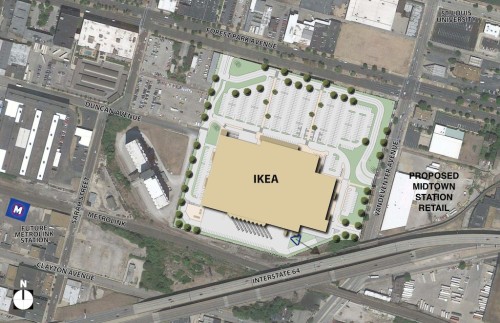
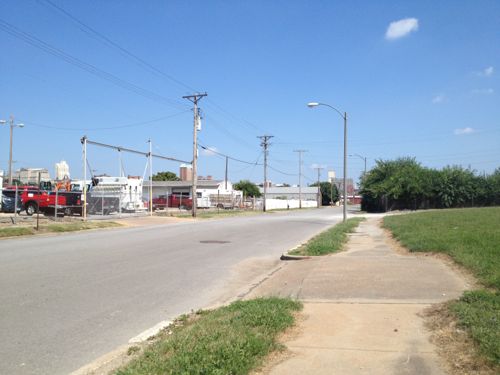
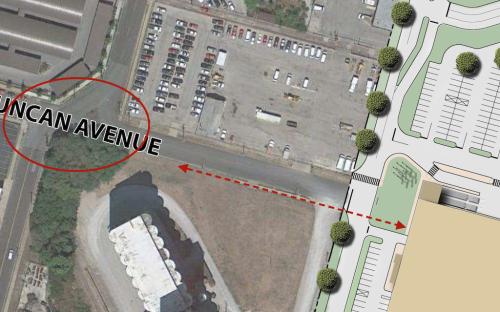
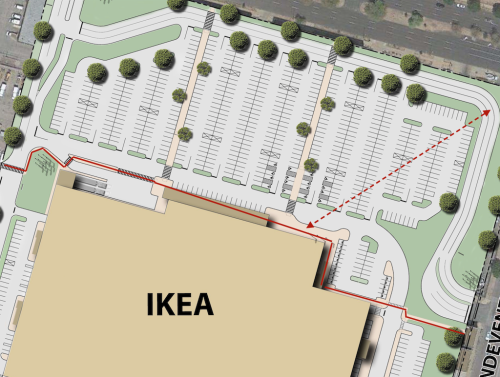
Click image to view larger version.
IKEA’s Reed Lyons told me they tried different configurations, including pushing the building out to the corner so it would be more urban. I believe him, but this is the “show-me” state so I’d like to see these rejected configurations. It’s like in school when you had complicated math problems — you had to show your work.
I also want to explore the width of Forest Park and Vandeventer. Both have a parking lane, roughly 10ft wide, that will become useless since there isn’t a reason to park on the street. Will this lane but used to direct traffic into the IKEA or can we do curb bulbs or other treatments to reduce the width of the roadway? There’s no reason to leave unused paving.
I do have one idea on how to get pedestrians from the proposed MetroLink to Vandeventer and the proposed Midtown Station retail project — a pedestrian route next to the tracks.
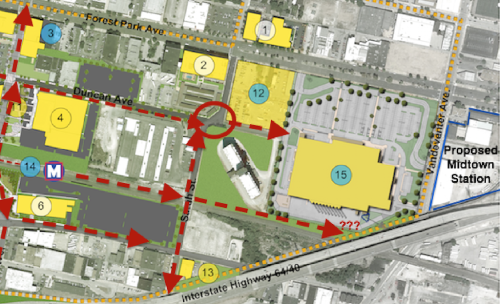
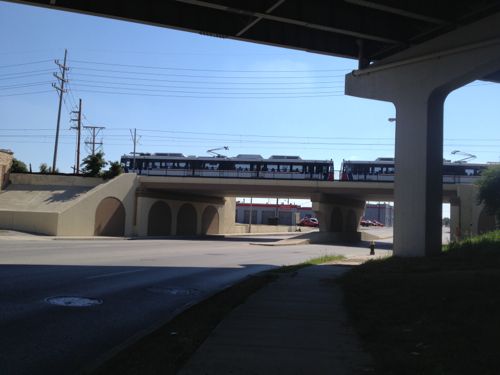
I’m excited about IKEA and realize it and Cortex have a lot of potential for St. Louis and the region. I also know just plopping in a light rail station doesn’t automatically create a vibrant & walkable neighborhood/district. Planning today will pay off in the long run.
— Steve Patterson
